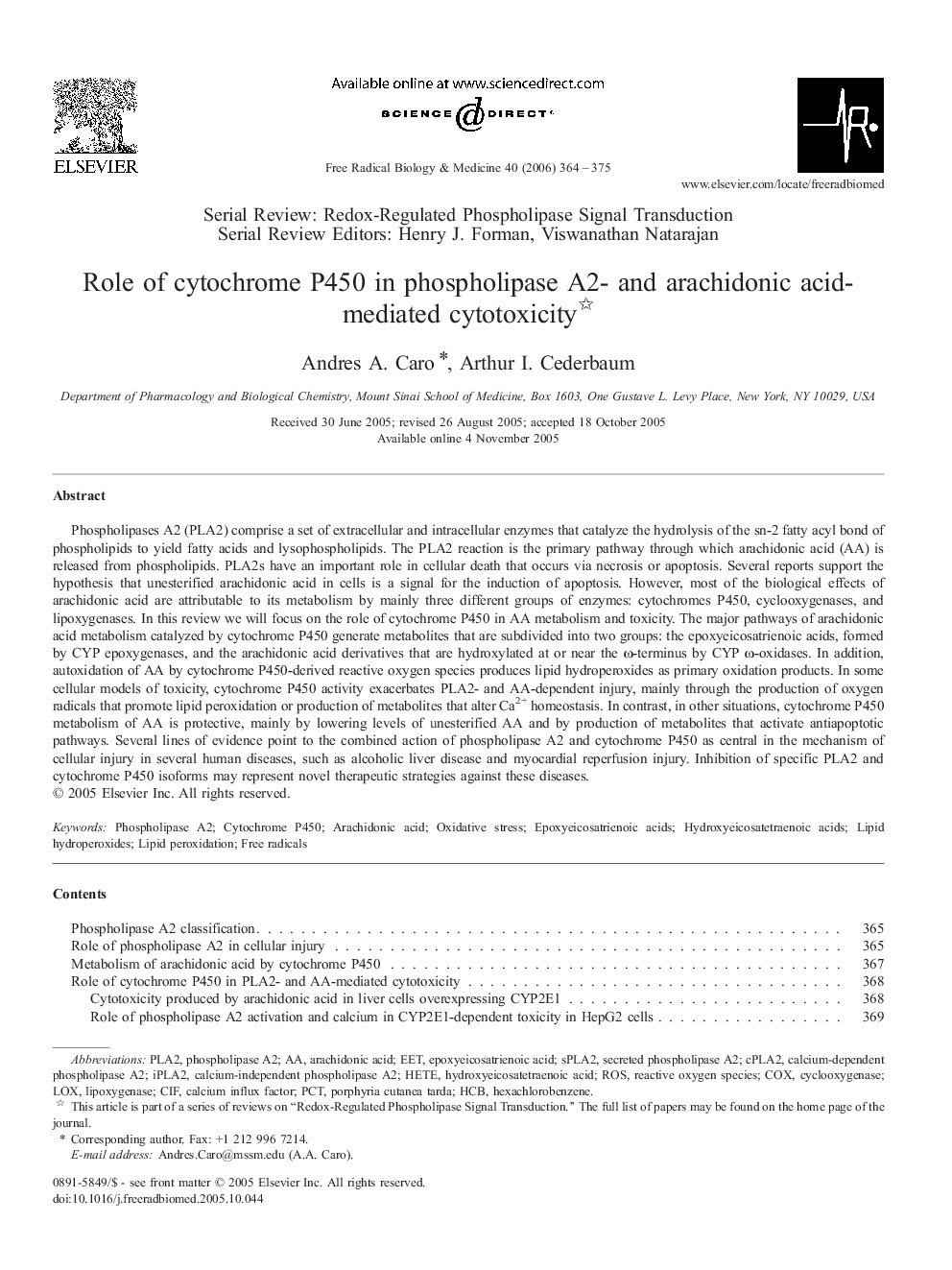| کد مقاله | کد نشریه | سال انتشار | مقاله انگلیسی | نسخه تمام متن |
|---|---|---|---|---|
| 1912009 | 1046856 | 2006 | 12 صفحه PDF | دانلود رایگان |

Phospholipases A2 (PLA2) comprise a set of extracellular and intracellular enzymes that catalyze the hydrolysis of the sn-2 fatty acyl bond of phospholipids to yield fatty acids and lysophospholipids. The PLA2 reaction is the primary pathway through which arachidonic acid (AA) is released from phospholipids. PLA2s have an important role in cellular death that occurs via necrosis or apoptosis. Several reports support the hypothesis that unesterified arachidonic acid in cells is a signal for the induction of apoptosis. However, most of the biological effects of arachidonic acid are attributable to its metabolism by mainly three different groups of enzymes: cytochromes P450, cyclooxygenases, and lipoxygenases. In this review we will focus on the role of cytochrome P450 in AA metabolism and toxicity. The major pathways of arachidonic acid metabolism catalyzed by cytochrome P450 generate metabolites that are subdivided into two groups: the epoxyeicosatrienoic acids, formed by CYP epoxygenases, and the arachidonic acid derivatives that are hydroxylated at or near the ω-terminus by CYP ω-oxidases. In addition, autoxidation of AA by cytochrome P450-derived reactive oxygen species produces lipid hydroperoxides as primary oxidation products. In some cellular models of toxicity, cytochrome P450 activity exacerbates PLA2- and AA-dependent injury, mainly through the production of oxygen radicals that promote lipid peroxidation or production of metabolites that alter Ca2+ homeostasis. In contrast, in other situations, cytochrome P450 metabolism of AA is protective, mainly by lowering levels of unesterified AA and by production of metabolites that activate antiapoptotic pathways. Several lines of evidence point to the combined action of phospholipase A2 and cytochrome P450 as central in the mechanism of cellular injury in several human diseases, such as alcoholic liver disease and myocardial reperfusion injury. Inhibition of specific PLA2 and cytochrome P450 isoforms may represent novel therapeutic strategies against these diseases.
Journal: Free Radical Biology and Medicine - Volume 40, Issue 3, 1 February 2006, Pages 364–375